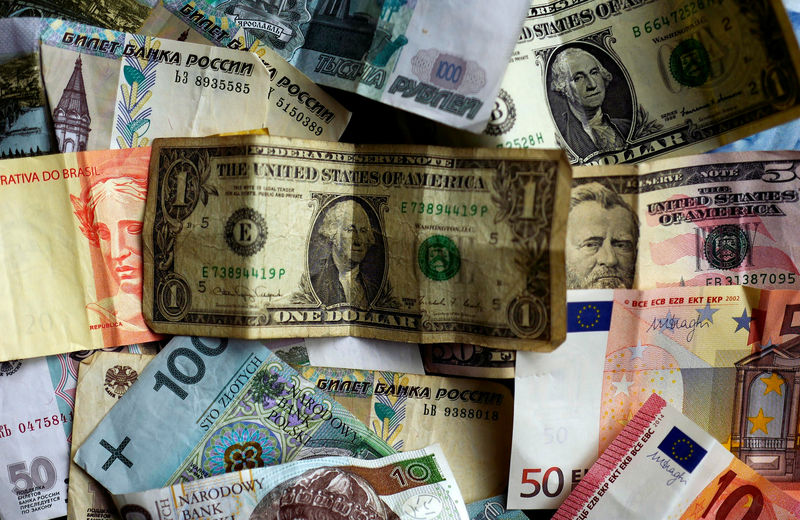 © Reuters. Bank notes of different currencies are photographed in Frankfurt, Germany, in this illustration picture
© Reuters. Bank notes of different currencies are photographed in Frankfurt, Germany, in this illustration pictureFRANKFURT (Reuters) – Europe’s ‘shadow banking’ sector shrunk last year, unexpectedly yielding market share to traditional lenders after more than a decade of often rapid growth, a report by the European Union’s risk watchdog showed on Monday.
Assets held by EU shadow banks – financial firms outside regular banks, insurance companies, pension funds and clearing houses – dipped 0.1 percent to 42.3 trillion euros ($48.9 trillion) while the overall financial system expanded by 0.9 percent, the European Systemic Risk Board said.
Shadow banks, a wide range of operations including hedge funds and securitization vehicles, expanded rapidly for years. This raised concerns about financial stability in a sector which lacks the level of transparency applied to regular banking.
Traditional lenders frequently complain that shadow banks face more relaxed regulation, including capital requirements, making it easier for them take market share, while shifting risk to a less transparent sector without making the financial system safer.
The ESRB said in a report that vulnerabilities include liquidity risk, the risk of contagion across sectors and within shadow banking, and the leverage created through the use of derivatives and securities to finance transactions.
Almost all of the dip in the sector last year came in a segment of shadow banking for which a detailed statistical breakdown is not available, the ESRB said, referring to about 20 trillion euros’ worth of assets.
These “residual assets” are so-called because they are not broken down in further detail to reflect their ownership in the financial accounts data. The segment is of concern due mainly to the lack of statistical information as assets are not transacted on open markets and may be treated differently across countries.
But the ESRB noted that much of these “residual” assets may not even be involved in shadow banking since it was possible that large chunks were used by corporations to channel funds to other entities of the group.
Still, virtually all other segments of shadow banking expanded, led by various investment funds, which held 13.5 trillion euros in assets at the end of last year, up from 12.2 trillion a year earlier.
“Net inflows were particularly strong for bond funds and mixed funds during a period of sustained low financial market volatility, adding a total of 250 billion euros and 290 billion euros respectively to these sectors in 2017,” the ESRB said.
Total assets of euro zone financial vehicle corporations remained stable in 2017 at 1.9 trillion euros.
Fusion Media or anyone involved with Fusion Media will not accept any liability for loss or damage as a result of reliance on the information including data, quotes, charts and buy/sell signals contained within this website. Please be fully informed regarding the risks and costs associated with trading the financial markets, it is one of the riskiest investment forms possible.
Source: Investing.com



























